xtry51
NES Member
So, I started a chat with our resident off grid expert Gomer, but figured I should post a thread here. My wife's grandfather (hither to referred to as Gramps  ) is all about going off grid and installed a kit from Amazon linked below for a vacuum tube solar collector. Well, I saw him last week and he can't stop talking about how awesome it is. After looking at what he is generating even in these super short days of Nov, I have to say I was impressed. He is producing 1/3rd of all his heat and hot water needs from the single kit (measured by comparing his previous electric use from last year to this year since installation). Last week when I was there he was producing enough to heat the top of the holding tank to 125F. I think the bottom was 90F while I was there.
) is all about going off grid and installed a kit from Amazon linked below for a vacuum tube solar collector. Well, I saw him last week and he can't stop talking about how awesome it is. After looking at what he is generating even in these super short days of Nov, I have to say I was impressed. He is producing 1/3rd of all his heat and hot water needs from the single kit (measured by comparing his previous electric use from last year to this year since installation). Last week when I was there he was producing enough to heat the top of the holding tank to 125F. I think the bottom was 90F while I was there.
Gramps lives in NE CT. I live in S NH, making my winters a little colder meaning I'll have to go deeper into the glycol territory than he is. This lowers the thermal efficiency of the system. So here's my main question. Does anyone know of someone using this type of setup in VT, NH or ME? I'm just trying to get an idea on what scale I would need to go and get some data points if they are out there.
We currently use oil for hot water (100% house heat from wood). So I can keep the oil to use as a backup and fill in for those cloudy weeks. I'm trying to establish a long term plan for going complete off grid for our house. Right now this year I have to do a new metal roof and install solar in the garage to make it stand alone off grid as a test. So this is a 2019 or 2020 project if I think it's viable this far north.
I am going to see Gramps this weekend again for Thanksgiving. I will take pics of his setup and post them here when we get back for reference incase anyone is interested. His setup does include some parts not in the kit below as he was retrofitting the whole thing into a 1700s farm house that required some initial plumbing "simplification" and will require a lot more work to streamline once he expands the current setup. Whoever did the plumbing in that house over the years loved Rube Goldberg and probably owned stock in copper pipe manufacturing
Amazon Kit:
Amazon product ASIN B00HP84GVO
Gramps lives in NE CT. I live in S NH, making my winters a little colder meaning I'll have to go deeper into the glycol territory than he is. This lowers the thermal efficiency of the system. So here's my main question. Does anyone know of someone using this type of setup in VT, NH or ME? I'm just trying to get an idea on what scale I would need to go and get some data points if they are out there.
We currently use oil for hot water (100% house heat from wood). So I can keep the oil to use as a backup and fill in for those cloudy weeks. I'm trying to establish a long term plan for going complete off grid for our house. Right now this year I have to do a new metal roof and install solar in the garage to make it stand alone off grid as a test. So this is a 2019 or 2020 project if I think it's viable this far north.
I am going to see Gramps this weekend again for Thanksgiving. I will take pics of his setup and post them here when we get back for reference incase anyone is interested. His setup does include some parts not in the kit below as he was retrofitting the whole thing into a 1700s farm house that required some initial plumbing "simplification" and will require a lot more work to streamline once he expands the current setup. Whoever did the plumbing in that house over the years loved Rube Goldberg and probably owned stock in copper pipe manufacturing
Amazon Kit:
Amazon product ASIN B00HP84GVO

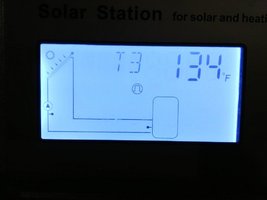
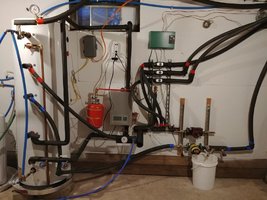
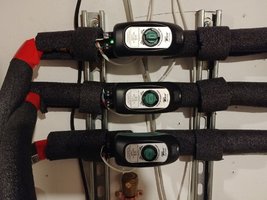
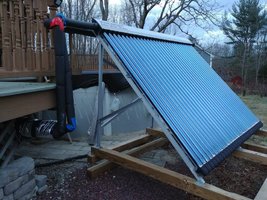
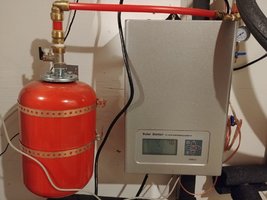
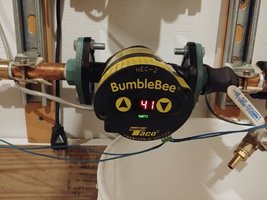
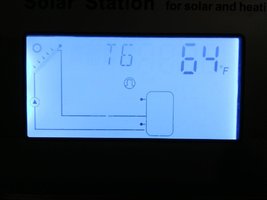
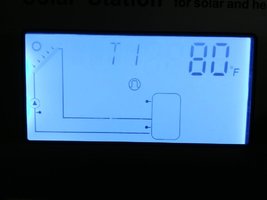
![Laugh [laugh] [laugh]](/xen/styles/default/xenforo/smilies.vb/012.gif)